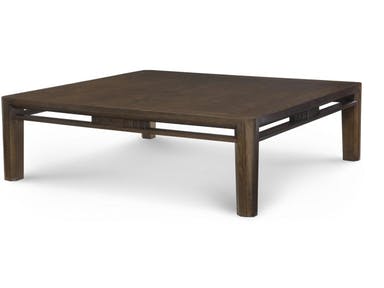
Century Furniture Living Room Akimi Coffee Table AE9-601
Did it ever occur to you that most Japanese homes are actually small? While this is so, you would not hear Zen enthusiasts ever complaining of not having ample space. And even when these homes are situated close to one another, natural light, safety, and privacy are all still kept intact.
Most urban Japanese homes are not single-family homes. In fact, their apartments are small yet you will still see the beautiful traditional features like step-up entryways and the deeply-relaxing soaking tubs.
Even Westernized Japanese style homes have one Japanese room complete with tatami flooring. This means that the traditional Japanese elements are still widely incorporated by many Western architects. The essential concepts are the following –
Gates
When you go to Japan, one of the things that you would immediately notice are the gated entryways. This is because many residential streets do not have sidewalks. The line of demarcation, therefore, rests on the property’s gate.
The gate is also traditionally roofed especially in Kyoto, Japan. It is also common to find cherry trees in the garden that greets the visitors once they are welcomed into the property.
Walls
Since there are gates, naturally, there are walls. The Japanese always make their properties secure and private so they set up walls right at the property lines. The most common material is the concrete block whether the home is situated in a quaint village or in a city.
There are also bigger homes with stone walls that are topped with wooden fences. There are even those that are topped with actual trees.
Tiled Roofing
Japan is constantly bombarded with rain, hence, their roofs are designed for water drainage. The broad eaves allow the opening of exterior doors without letting in unwanted rain splashes.
Step-Up Entryway
This is that transitional space between the interiors of the home and the outdoors. This is that very spot where the shoes are exchanged for the slippers. Called the genkan, this is also where a shoe cupboard can be placed also some decorative objects like art, flowers or ceramics.
This area may also face the tokonoma or the alcove where artwork or scrolls are prominently displayed. Ikebana or flower arrangements may also be featured there.
North-South Views
Japanese houses are often set up north-south, meaning, the house gets a steady amount of sunlight during the day. The outdoor views are often mountains or lovely water features.
Would you believe that natural light is actually a human right in Japan?
Sliding Doors
The lovely louvered doors are also essential parts of every Japanese home. These also feature slatted windows which are common in live-work homes.
Wood and Straw Everywhere
No Japanese home can be called such without an element of wood in it. Japanese homes often stain their wooden features but they never paint them. It is crucial to feature the wood grain insomuch that they can even feature an entire tree as a roof beam.
Another important material in Japanese interior design is straw matting. On any tatami flooring, a type of grass called igusa is woven. This is used to keep the house cool during the summer months and warm during winter.
Straw matting can be a tad costly but they are known to last for many, many years. Remember how the Japanese never use their dirty shoes indoors? This is the reason why the tatami flooring remains undamaged for many years.
You can also follow this same concept. To add to the Zen atmosphere, you can also bring in standard rectangle mats. Get the ones that have black cloth or brocade edges.
Multi-Purpose Rooms
Traditional Japanese homes also have multiple purposes for every room. The futon or traditional bedding can be folded during the day to reveal a larger room where people can relax, sit or even dine.
© McCreery's Home Furnishings | All Rights Reserved | Privacy Policy